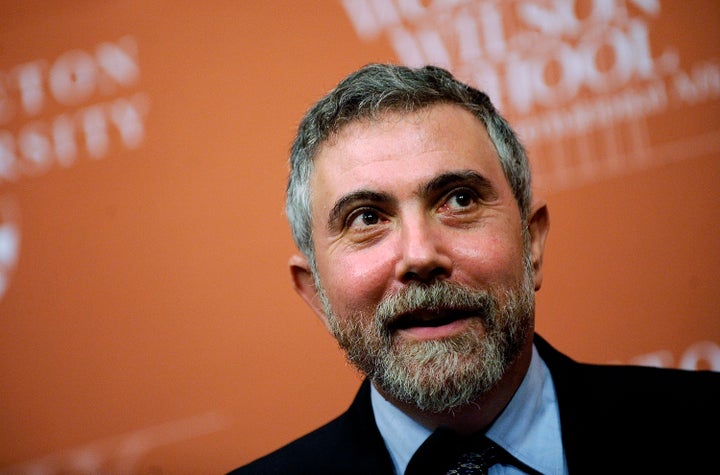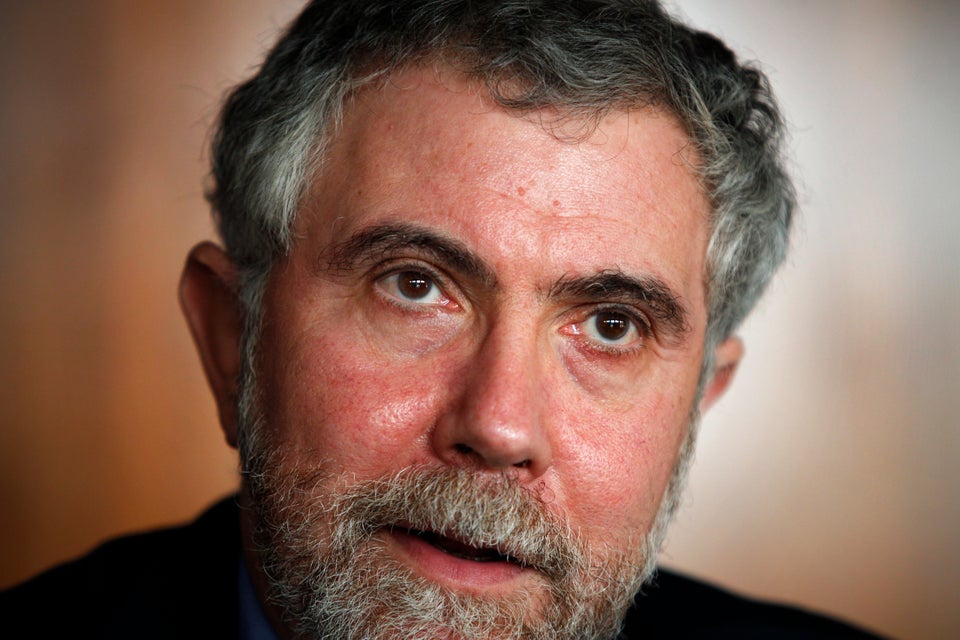
Bloomberg View:
Americans have been whipsawed by devastating cycles of boom and bust over the past three decades. Now some at the Fed want us to go through it again.
The excesses of the 1980s -- leveraged buyouts, the junk bond bubble and wild property speculation -- led directly to the original "jobless recovery" of the early 1990s. This occurred despite a prolonged period of very low interest rates. (The 1990 tax increases and post-Cold War defense cuts were probably counterproductive.) In many ways, that episode was a dress rehearsal for the recent crisis, so it makes sense that some of the most interesting writings about the dangers of excessive private borrowing come from that earlier time.
More from Bloomberg View:
- Wall Street Guys Always Make the Best Villains
- Empirical Economics Isn’t Yet as Smart as Dentistry
It didn't take long for the next boom and bust cycle to hit. In the second half of the 1990s, the irrational exuberance of stock investors fueled a binge of business spending. Real nonresidential private investment increased at an annualized rate of more than 12 percent between the beginning of 1996 and the middle of 2000. That changed once firms realized that they had been wasting their money on bad investments and unneeded capacity. Capital expenditures plummeted by nearly 20 percent between the middle of 2000 and the end of 2001. Real business investment didn't return to its pre-recession level until the beginning of 2005.
The massive swing in capital spending plunged the economy into recession and held back the recovery for years. According to the Census Bureau's Current Population Survey, real median incomes (for individuals, not households) increased at an annualized rate of just 0.2 percent from 2001 through 2007. More Americans were working in the private sector in December, 2000, than in May, 2005. Since the population of prime-age workers was expanding throughout this period, the actual damage was even worse. Again, this was in spite of the fact that real interest rates were very low for a long time and in spite of the large tax cuts and spending increases of the early 2000s.
In 2002, economist Paul Krugman, who would go on to win a Nobel Prize in 2008, advised that the Fed "create a housing bubble to replace the Nasdaq bubble." In his view, this would allow "soaring household spending to offset moribund business investment." (Krugman began warning that the housing bubble was dangerous in 2005.)
We now have extensive evidence that the wanton borrowing that fueled the recent housing bubble made the economy vulnerable to the devastating downturn the U.S. endured. This shouldn't have been surprising. After studying every business cycle experienced by 14 rich countries since 1870, Oscar Jorda, Moritz Schularick and Alan Taylor found that excessive private credit growth systematically predicts deeper downturns and slower recoveries.
Back in the 2000s, however, most people just wanted to get out of the funk associated with the aftermath of the tech boom. There was also a widespread belief that bubbles aren't dangerous as long as the central bank is around to "clean up" the mess when they burst. This view was best articulated by Ben Bernanke in 1999. As a result, many monetary policymakers were untroubled by the prospect of creating a new bubble to replace the old one.
Transcripts of the Fed's internal meetings make it clear that this was their conscious plan. On March 16, 2004, Donald Kohn, a longtime Fed staffer who later became the Fed's vice chairman, said that the credit bubble was "deliberate and a desirable effect of the stance of policy." According to Kohn, the Fed's strategy was: "boost asset prices in order to stimulate demand." That appeared to work for a short time, but it ended badly. We're still struggling to emerge from the wreckage despite, yet again, incredibly low real interest rates and very large government budget deficits. Clearly, cleaning up after bubbles is harder than it's made out to be.
One might think that the Fed has learned something from this experience. A recent speech from Nayarana Kocherlakota, the president of the Minneapolis Federal Reserve Bank, suggests otherwise. He said that the Fed "will only be able to achieve its congressionally mandated objectives by following policies that result in signs of financial market instability." In other words, he wants to repeat the exact same formula that Donald Kohn endorsed in the 2000s.
According to Kocherlakota, the Fed is incapable of lowering the unemployment rate without creating more bubbles. This attitude is strange; Kocherlakota implicitly denies the possibility that the economy could ever grow at a healthy pace without the stimulus provided by unsustainable asset bubbles. More precisely, he said that the Fed needed real interest rates to be "unusually low for a considerable period of time" and that this would lead to "unusual financial market outcomes" including "inflated asset prices, high asset return volatility and heightened merger activity." Surely there must be a better way.
To his credit, Kocherlakota acknowledged the possibility that "raising the real interest rate may reduce the risk of a financial crisis -- a crisis which could give rise to a much larger fall in employment and prices." However, he seemed confident that this would be unnecessary. In his view, regulators will do a far better job in the 2010s than they did in the 2000s. Troublingly, Kocherlakota's only support for this assertion was that "the Federal Reserve System now dedicates a significant amount of our best staff resources to financial system surveillance."
A different view comes from Jeremy Stein, a governor on the Federal Reserve Board. Back in February, he warned that the most pernicious consequences of low real interest rates could not be prevented by regulation:
"Despite much recent progress, supervisory and regulatory tools remain imperfect in their ability to promptly address many sorts of financial stability concerns. If the underlying economic environment creates a strong incentive for financial institutions to, say, take on more credit risk in a reach for yield, it is unlikely that regulatory tools can completely contain this behavior."
Stein went on to argue that there will be times when the Fed has to use monetary policy to maintain financial stability and fulfill its long-term objectives:
"While monetary policy may not be quite the right tool for the job, it has one important advantage relative to supervision and regulation -- namely that it gets in all of the cracks. The one thing that a commercial bank, a broker-dealer, an offshore hedge fund, and a special purpose ABCP [asset-backed commercial paper] vehicle have in common is that they all face the same set of market interest rates. To the extent that market rates exert an influence on risk appetite, or on the incentives to engage in maturity transformation, changes in rates may reach into corners of the market that supervision and regulation cannot."
Regrettably, Stein's perspective seems to be a minority view at the Fed right now. The issue isn't what to do right now so much as the tradeoffs policymakers will face in the near future. Raising interest rates today would probably do more harm than good. At some point, though, the relative costs and benefits will be less clear and these distinctions will start to matter.
Kocherlakota expects real rates to be "unusually low" for "the next five to 10 years." By contrast, Stein is concerned that the worst practices of the go-go years will return sooner -- along with their predictable consequences -- if preventive action isn't taken sooner. This disagreement will be one of the most important economic policy debates of our time.
There is a word for people who do the same thing over and over again, expecting different results: insane. Let's hope that they don't constitute a majority of the Fed's voting members, or we will once again be doomed to another destructive and pointless cycle of boom and bust.
(Matthew C. Klein is a contributor to the Ticker. Follow him on Twitter.)
